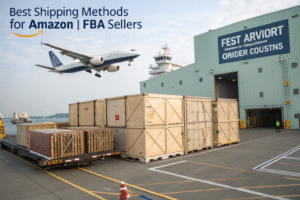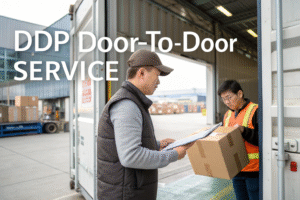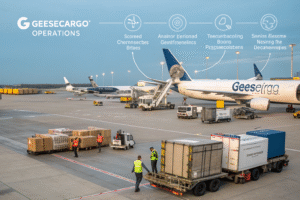Shipping errors are costly. A misrouted container, a wrong HS code, or a missing document can lead to delays, fines, and lost trust. For Ron and other high-volume U.S. buyers sourcing from China, precision is everything. Yet errors are still common—unless you work with an experienced freight forwarder.
Freight forwarders can prevent costly shipping errors through structured documentation control, cargo tracking systems, customs compliance support, and proactive communication. At GeeseCargo, we treat every shipment like a contract. Mistakes aren’t acceptable—systems, training, and experience are how we avoid them.
Here’s how we eliminate common errors from international shipping workflows.
What Are the Most Common Shipping Errors?
Mistakes in freight forwarding usually don’t happen because people are careless—but because processes are rushed or misaligned. If you’re not working with a professional team, small lapses become big delays.
Knowing the most frequent mistakes is the first step in avoiding them.

What Paperwork Mistakes Occur Most Often?
Incorrect or incomplete shipping documents are the top source of customs rejections. These include:
- Inaccurate HS codes on the commercial invoice
- Mismatched consignee data on the Bill of Lading
- Missing certificates for restricted goods
- Inconsistent declared values
Learn more about common customs documentation mistakes that slow international shipments.
Are Routing and Labeling Errors Preventable?
Absolutely. Forwarders that rely on manual inputs often deal with:
- Wrong port of destination codes
- Reversed shipping labels
- Booking to incorrect incoterm location
At GeeseCargo, we use barcode validation and multi-layer digital checks to ensure routing accuracy. Explore how barcode systems reduce freight mistakes.
How Do Freight Forwarders Prevent Documentation Errors?
Shipping documents are the DNA of every freight movement. One wrong detail could halt the cargo at a foreign port. That’s why document control is core to GeeseCargo’s service promise.

What Systems Ensure Documentation Accuracy?
At GeeseCargo, we run every client shipment through a standardized document review:
- Commercial invoice auto-validation
- Packing list structure checking
- Certificate of Origin requirement match
- Entry summary cross-check for tariff zone
Our platform flags inconsistencies before customs do—saving time and penalties. Here’s a breakdown of automated freight document systems trusted across the industry.
Do You Coordinate With Suppliers on Paperwork?
Yes. Most errors begin at the factory. We provide suppliers with:
- Document templates for each shipment type
- Instructions for declaration alignment
- Weekly audits for ongoing shipments
We even run mock customs clearances for first-time exporters to reduce their learning curve. This makes us not just a freight handler, but a partner in cross-border readiness.
How Can Tracking Systems Minimize Operational Errors?
Errors aren’t just paperwork—they happen mid-transit, too. Cargo lost between hubs, wrong transshipment, miscommunication on container handling... these cause disruption.
Our proactive tracking systems detect problems early and trigger response protocols.

What Tech Helps Track and Prevent Errors?
We use:
- GPS-linked air and ocean shipment tracking
- Warehouse scan alerts for mismatch or delays
- Exception management dashboards
- Predictive ETA variance tracking
Tools like these prevent freight going off-course. Learn about real-time freight visibility and how it empowers smarter decisions.
What Happens When We Spot a Risk?
If a shipment deviates from the plan, our control tower:
- Notifies the customer within 1 hour
- Engages the carrier for rerouting
- Updates new ETA and delivery sequence
Because we act before something becomes a problem, the error is neutralized before it affects your operations or cash flow.
What Role Does Communication Play in Error Prevention?
Even with tech, human communication closes the loop. GeeseCargo believes in prevention through alignment. When all parties are informed, confusion and error disappear.

How Often Do We Update Clients?
We give our clients:
- Booking confirmations within 2 hours
- Pre-loading summaries with photos
- Customs release notices instantly
- Delivery arrival forecasts 48 hours ahead
Ron appreciates that we over-communicate, not under. Read why real-time communication reduces shipping risks.
What About Language and Time Zone Barriers?
We have bilingual account managers available 24/7. Our China team handles coordination during factory hours, and our U.S. logistics team covers night-time follow-ups. No waiting. No silence. No missed critical updates.
Conclusion
Shipping errors are costly, but they are not inevitable. The right freight forwarder is your firewall against mistakes—through strong systems, constant communication, and meticulous execution. At GeeseCargo, we don’t just fix shipping problems. We prevent them before they start. When accuracy matters, we deliver peace of mind—shipment after shipment.









